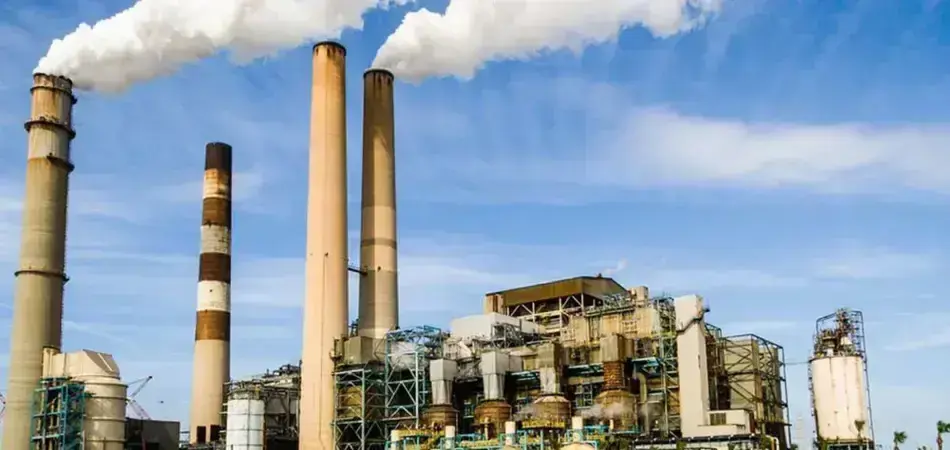Industrial Revival: The Missing Pillar of Pakistan’s Economic Recovery

MG News | October 16, 2025 at 10:35 AM GMT+05:00
By Ahmed Ateeq
October 16, 2025 (MLN):
1. The Cost of Waiting
On July 24, 2025, the State Bank of Pakistan (SBP)
introduced the 'Revival and Debt Resolution of Sick Industrial Units
(RDRSIU-2025)' framework — a landmark initiative aimed at reviving distressed
industries and addressing the buildup of non-performing loans (NPLs).
Pakistan’s industrial base has contracted sharply in recent years, with over
PKR 750 billion in industrial loans now classified as non-performing,
representing nearly 28% of total corporate defaults. Approximately 60% of these
units — primarily in textiles, steel, engineering, and chemicals — remain
technically viable, possessing recoverable land, plant, and workforce.
Rebuilding such facilities from scratch would cost over PKR 2.2 trillion,
nearly three times the cost of structured revival. If even one-third of these
units are successfully rehabilitated under RDRSIU-2025, Pakistan could unlock
PKR 250–300 billion in reactivated credit, generate 400,000–500,000 jobs, and
lift GDP by nearly 1% within 18 months.
2. The RDRSIU-2025 Framework
The SBP’s framework provides a comprehensive structure
for debt restructuring, revival, and settlement of sick industrial units. It
categorizes borrowers into four classes — Viable, Marginally Viable, Dormant,
and Fraudulent — ensuring that only productive and recoverable units receive
support.
Key features of RDRSIU-2025 include:
• Restructuring & Write-offs: Banks may extend loan tenors, reduce interest
rates, and approve principal haircuts up to 60%, based on third-party viability
assessments.
• Debt-to-Equity Conversions: Permitted where strategic investors or existing
sponsors inject new equity.
• Revival Timelines: Settlements must be finalized within 12–24 months of
approval.
• Reporting & Oversight: Banks must submit monthly progress reports to SBP.
• Supervisory Control: SBP will monitor implementation under its Prudential
Regulations for industrial revival.
3. Quantitative Impact Projection (FY2026–27)
|
Indicator |
Baseline
(2025) |
Post-Policy
Projection |
Impact |
|
Industrial
NPL Stock |
PKR 750 bn |
PKR 600 bn |
↓ ~20% (≈
PKR 150 bn revived) |
|
Provisioning
Burden on Banks |
PKR 125 bn |
PKR 95 bn |
↓ ~24% (≈
PKR 30 bn capital freed) |
|
Reactivated
Units |
— |
250 – 300 |
Reinstated
to production |
|
Employment
Recovery |
— |
470,000
(direct + indirect) |
+0.5
million jobs |
|
GDP Growth
Contribution |
2.1% (LSDP
manuf.) |
+0.9 p.p. |
Within 18
months |
|
Import
Substitution Savings |
— |
USD 1.5 bn
annually |
Reduced
import of industrial goods |
4. Regional and International Benchmarks
Pakistan’s RDRSIU-2025 framework aligns with successful
global rehabilitation models. India’s IBC & SARFAESI Acts revived over USD
45 billion in assets, Vietnam’s Industrial Modernization Scheme (2019–2023)
revitalized 1,200 factories generating 320,000 jobs, and Bangladesh’s Textile
Restructuring Program (2020–2024) added USD 3.4 billion in exports. Meanwhile,
Pakistan’s industrial GDP share fell from 20.9% in FY2016 to 16.3% in FY2024,
with engineering goods imports rising by 37%. This framework represents
Pakistan’s first serious attempt to reverse deindustrialization through
financial realism.
5. Current Implementation Status
Despite the introduction of RDRSIU-2025 in July, no formal
implementation or pilot rollout has occurred as of October 2025. The State
Bank’s internal process has remained cautious and highly controlled, with
decisions moving through multiple approval layers. While this prudence is
understandable, the pace has been slow — leaving viable units and creditors in
prolonged uncertainty. A framework designed to resolve distress within 12–24
months has already spent its first quarter in administrative suspension. The
delay risks eroding both confidence and the intended economic impact of what
remains one of Pakistan’s most pragmatic reform instruments.
6. Banking and Fiscal Synergy
Pakistan’s banking exposure to large-scale manufacturing
exceeds PKR 2.8 trillion. Implementing RDRSIU-2025 could convert non-performing
exposures into performing assets, release PKR 30–35 billion in provisions, and
enable new credit worth PKR 200 billion. It represents a fiscal-neutral reform
that strengthens both financial stability and industrial output — aligning with
IMF’s long-term structural goals.
7. The Strategic Imperative
Industrial erosion is more than an economic concern — it is
a sovereignty challenge. No country can sustain independent growth while
relying on imported steel, machinery, or energy equipment. RDRSIU-2025 is not
merely a banking framework; it is Pakistan’s opportunity to rebuild its
industrial backbone and redefine self-reliant growth.
About the Author
Ahmed Ateeq is an investment banker and industrial strategist with over two decades of experience in development finance, restructuring, and industrial revival.
Related News
| Name | Price/Vol | %Chg/NChg |
|---|---|---|
| KSE100 | 167,085.58 225.68M | 0.48% 802.03 |
| ALLSHR | 101,220.72 685.91M | 0.47% 477.65 |
| KSE30 | 50,772.02 134.57M | 0.57% 290.16 |
| KMI30 | 239,923.35 145.03M | 0.77% 1831.31 |
| KMIALLSHR | 66,042.80 345.76M | 0.65% 425.34 |
| BKTi | 45,106.39 29.18M | 0.06% 24.91 |
| OGTi | 33,583.05 26.44M | 1.52% 502.39 |
| Symbol | Bid/Ask | High/Low |
|---|
| Name | Last | High/Low | Chg/%Chg |
|---|---|---|---|
| BITCOIN FUTURES | 89,425.00 | 92,995.00 88,405.00 | -3415.00 -3.68% |
| BRENT CRUDE | 63.86 | 64.09 63.06 | 0.60 0.95% |
| RICHARDS BAY COAL MONTHLY | 91.00 | 0.00 0.00 | 0.10 0.11% |
| ROTTERDAM COAL MONTHLY | 97.25 | 97.25 97.25 | 0.05 0.05% |
| USD RBD PALM OLEIN | 1,016.00 | 1,016.00 1,016.00 | 0.00 0.00% |
| CRUDE OIL - WTI | 60.14 | 60.50 59.42 | 0.47 0.79% |
| SUGAR #11 WORLD | 14.82 | 15.02 14.73 | -0.06 -0.40% |
Chart of the Day
Latest News
Top 5 things to watch in this week
Pakistan Stock Movers
| Name | Last | Chg/%Chg |
|---|
| Name | Last | Chg/%Chg |
|---|




 Savings Mobilized by National Savings Schemes
Savings Mobilized by National Savings Schemes